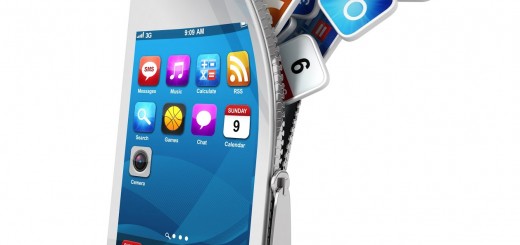The ‘rich’ evolution of mobile advertising
When it comes to user engagement, no other mass media can boast the same level of personalisation and far-reaching potential as mobile devices such as smartphones and tablets. Fuelling this trend is the shift in content consumption habits from desktop to mobile, which is increasingly driving brands to loosen their purse strings for sophisticated forms of mobile advertising. Mobile advertising itself is seeing a need to transform to adapt to changes caused by its phenomenally fast adoption and dynamic nature.
Evolving ad formats
The advent and popularisation of mobile devices brought on a new wave of creativity and innovation for advertisers, who reacted by adapting to the existing techniques. However, due to the lack of a common user interface, ads produced for traditional media were not completely suitable for mobile devices.
The introduction of the ‘touch’ interface in mobile devices has greatly altered the way ads can be served to consumers by incorporating intuitive and gesture-based functionalities. The increasing affordability of data plans and advanced smart device hardware are among the other factors redefining the way mobile advertising is being practised.
To this end, there has been a significant reduction in the basic text and banner ads, which were simply a derivative of desktop ad campaigns. Instead, the industry is opening up to varied and richer mobile advertising formats and styles such as mobile video, rich media ads, in-app full screen ads and native ads among others.
Brand advertisers find such ads useful as their appearance, shape and size can be easily customised; allowing advertisers an opportunity to grasp the user’s attention through design alone. In effect, the way ads are delivered on the platform is taking on a fresh approach as the world of smartphones and tablets evolves to accommodate various screen sizes, layouts, delivery and consumption, as per user expectations.
Rich media: The dynamic nature and interactive features of rich media are particularly beneficial to publishers, as they manage to sustain user interest through continuous engagement and interaction with the ads. The quality of the ad can be further enhanced through audio and video elements that allow the brand to create much stronger awareness than with static ads. Rich media, being of such an interactive and high quality nature, boosts ad-engagement substantially. Moving from just a ‘click’ based approach to numerous intuitive functionalities such as touch, click, drag, scratch, swipe and pinch, enables consumers to experience a brand in more engaging ways than ever before.
Native advertising: The next evolution towards greater user engagement is native advertising – a game-changing format that is based on the influx of content into the medium. By design, native mobile ads merge seamlessly with the app so as to avoid any interference with the user experience. By reducing the contrast between content and app, native advertising makes consumers more receptive to see the ads. Supplemented by the power of contextual local based advertising, native advertising has raised the bar for personalised mobile advertising by maximising engagement and minimising intrusiveness.
Evolution of ad technology
Apart from the sophistication and maturity of mobile ad formats, ad technology is undergoing rapid changes as well. Real time bidding (RTB) aids in improving accuracy levels of campaigns. With RTB, various user-specific parameters can be leveraged to serve relevant ads. Ad impressions that are enriched by the third-party data through RTB, enable advertisers to bid intelligently on mobile ad inventory on an impression-by-impression basis and in a cost effective and efficient way.
Exciting road ahead
With rich media paving the way for the industry to evolve further, marketers are looking at sharing unique content and deepening engagement with consumers rather than focusing on elementary metrics that function in silos. At the same time, marketers should leverage the advantages of different ad formats to create the best synergy and achieve optimal results, instead of relying on just one. For example, while native advertising is an important part of a social campaign to drive consumer engagement, rich media such as images or videos with a call to action can accelerate the performance of native ad campaigns by generating real engagement.
With mobile’s inherent capabilities to bridge physical transactions, drive content and services to consumers, it is safe to say that mobile domination will continue and adoption patterns will increase and diversify in the years to come.



